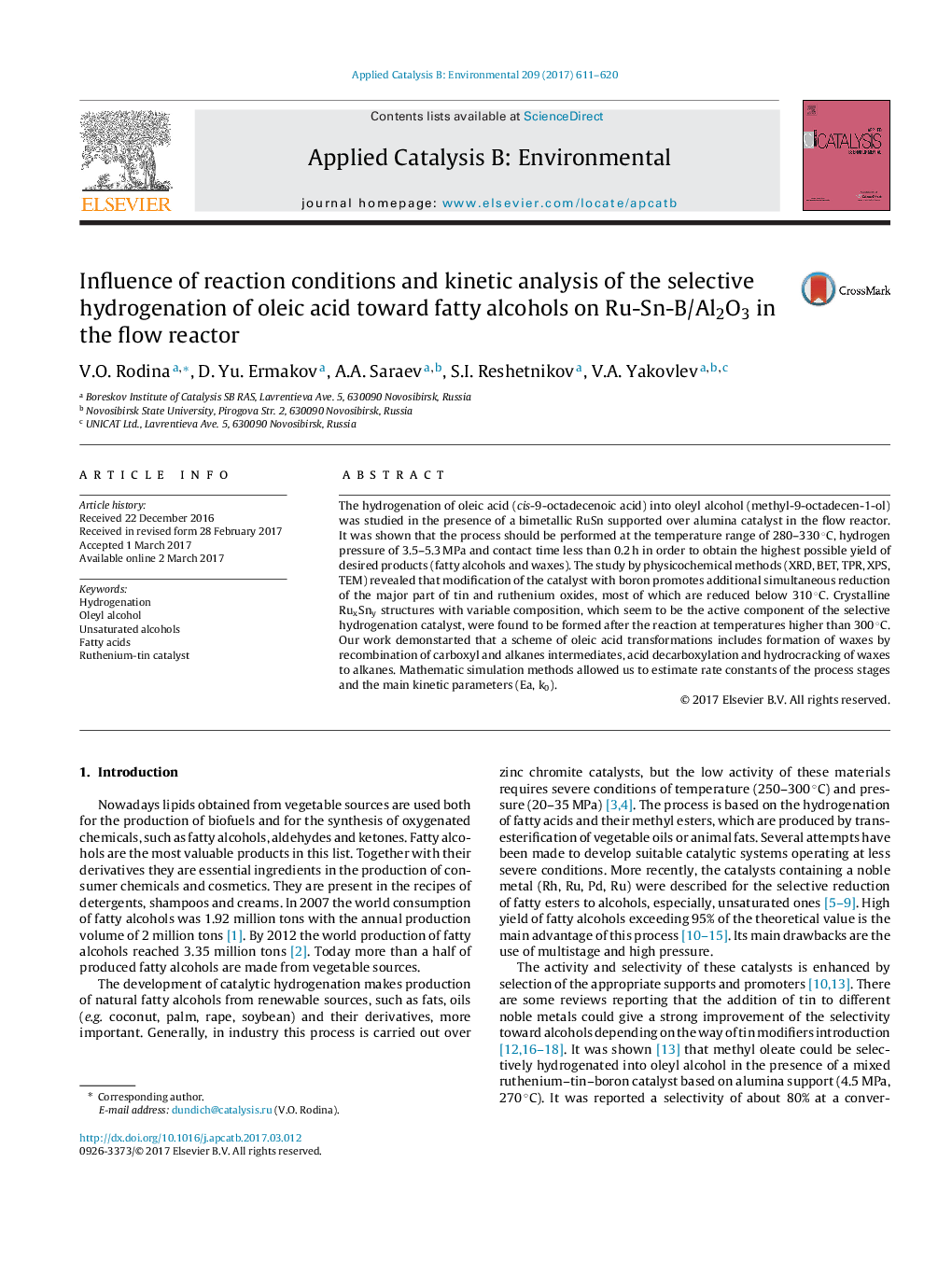| Article ID | Journal | Published Year | Pages | File Type |
|---|---|---|---|---|
| 6454242 | Applied Catalysis B: Environmental | 2017 | 10 Pages |
â¢RuSnB/Al2O3 was shown to be effective in the selective oleic acid hydrogenation.â¢Crystalline RuxSny solid solution is the active component of the catalyst.â¢The optimal reaction conditions are 280-330 °C and hydrogen pressure of 3.5-5.3 MPa.â¢A scheme of oleic acid transformations includes additional hydroconversion stages.
The hydrogenation of oleic acid (cis-9-octadecenoic acid) into oleyl alcohol (methyl-9-octadecen-1-ol) was studied in the presence of a bimetallic RuSn supported over alumina catalyst in the flow reactor. It was shown that the process should be performed at the temperature range of 280-330 °C, hydrogen pressure of 3.5-5.3 MPa and contact time less than 0.2 h in order to obtain the highest possible yield of desired products (fatty alcohols and waxes). The study by physicochemical methods (XRD, BET, TPR, XPS, TEM) revealed that modification of the catalyst with boron promotes additional simultaneous reduction of the major part of tin and ruthenium oxides, most of which are reduced below 310 °C. Crystalline RuxSny structures with variable composition, which seem to be the active component of the selective hydrogenation catalyst, were found to be formed after the reaction at temperatures higher than 300 °C. Our work demonstarted that a scheme of oleic acid transformations includes formation of waxes by recombination of carboxyl and alkanes intermediates, acid decarboxylation and hydrocracking of waxes to alkanes. Mathematic simulation methods allowed us to estimate rate constants of the process stages and the main kinetic parameters (Ea, k0).
Graphical abstractDownload high-res image (106KB)Download full-size image
